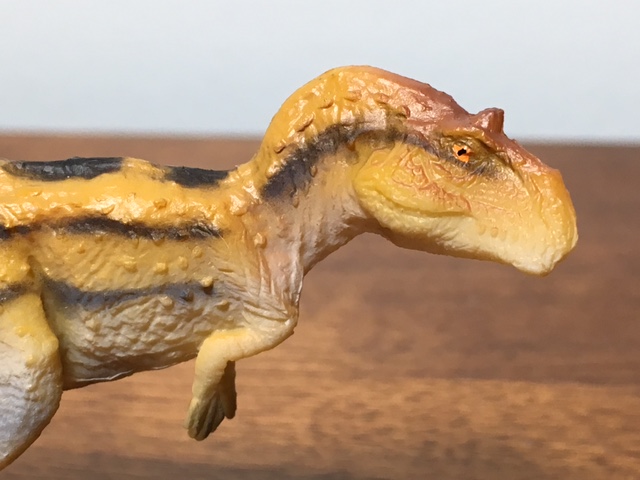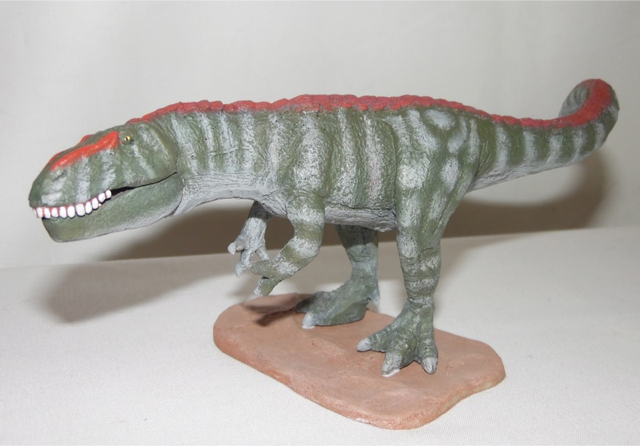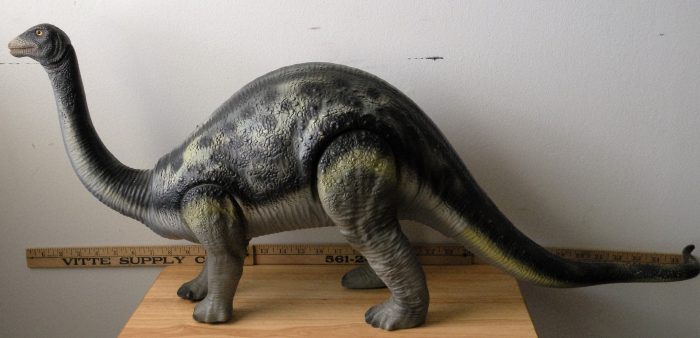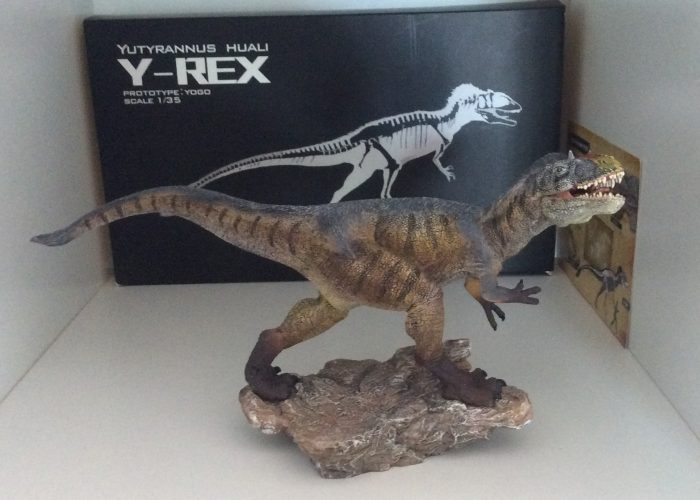Here’s Seia, the little Majungasaurus from PNSO.
Video: Plesiosauria transporter – don’t ask me why!
0 (0 votes)
Unboxing a “Plesiosauria transporter” by Takara Tomy. Don’t ask me why!
Review: Megachoerus AKA Archaeotherium (Tyco)
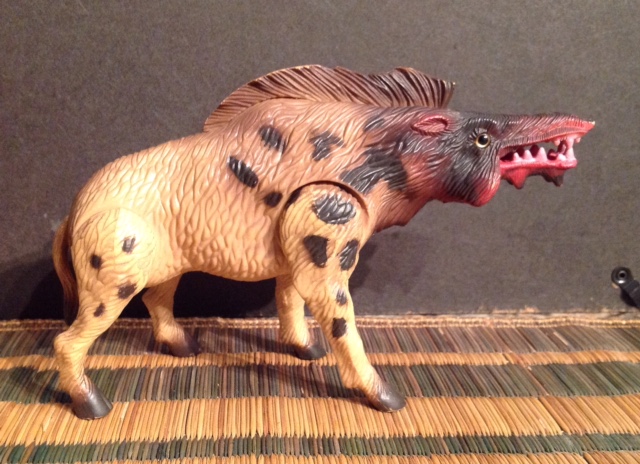
4.2 (6 votes)
Review and photos by Archinto, edited by Suspsy
Here we will be taking a look at a classic rendition of the prehistoric mammal Archaeotherium, as perceived by the Tyco company in 1990 for their awesome Dino-Riders toy line. This particular figure was released for the Ice Age sub-theme (under the subgenus Megachoerus), which also featured a motorized woolly mammoth as well as an articulated Smilodon and Megatherium.
Here we will be taking a look at a classic rendition of the prehistoric mammal Archaeotherium, as perceived by the Tyco company in 1990 for their awesome Dino-Riders toy line. This particular figure was released for the Ice Age sub-theme (under the subgenus Megachoerus), which also featured a motorized woolly mammoth as well as an articulated Smilodon and Megatherium.
Review: Torvosaurus (Paleo-Creatures)
Review: Dilophosaurus (Nature World by Boley)

3.5 (11 votes)
Review and photos by Bryan Divers, edited by Suspsy
Dilophosaurus has become very well known as a result of its appearance in Jurassic Park, where it approaches the would-be burglar Dennis Nedry in a friendly manner, but then becomes angry and spits venom at him, much like a modern cobra.
Dilophosaurus has become very well known as a result of its appearance in Jurassic Park, where it approaches the would-be burglar Dennis Nedry in a friendly manner, but then becomes angry and spits venom at him, much like a modern cobra.
Review: Brontosaurus (Tyco)
Review: Tuojiangosaurus (Age of the Dinosaurs by PNSO)
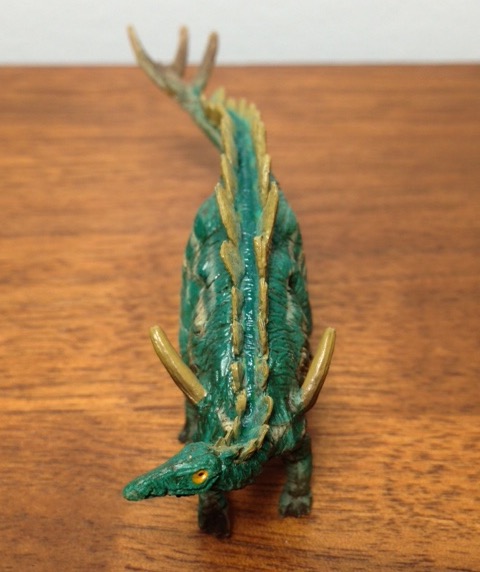
4.1 (12 votes)
What an impressive debut PNSO has made this year! From huge resin statues ranging from $500 to $2000(yowza!) to large vinyl figures and to a variety of finely detailed miniatures, it looks like this Chinese company is going to be causing us dinosaur collectors much joy and much lighter wallets in future!
Video: Top 10 tyrannosaur dinosaur toys (that aren’t T. rex!)
0 (0 votes)
Top 10 tyrannosaur (=Tyrannosauroidea) dinosaur toys (that aren’t T. rex!) T. rex isn’t the only tyrannosaur, you know! See the results and cast your own vote here: https://dinotoyblog.com/forum/index.php?topic=3157.0
Review: Yutyrannus (REBOR)
Review: Ankylosaurus (CollectA)
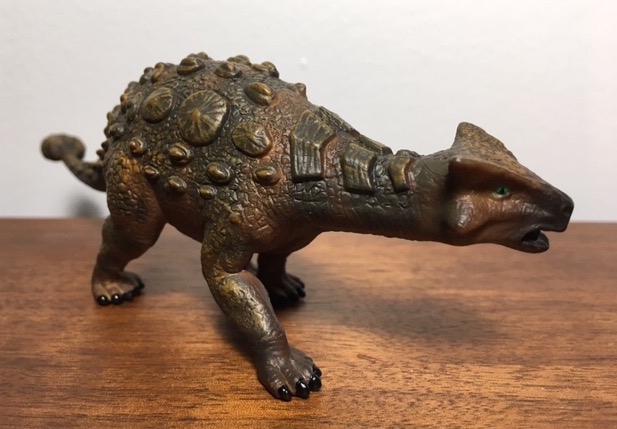
2.2 (24 votes)
With its wide muzzle and tiny, leaf-shaped teeth, Ankylosaurus, like the rest of its family, was clearly a herbivore? Or was it? In the summer of 2015, a study of its close Asian relative Pinacosaurus concluded that the animal possessed a long, prehensile tongue that it used to pluck and scoop up not only vegetation, but possibly insects and other invertebrates on occasion.
Review: Brachiosaurus (Jurassic Park by Dakin)
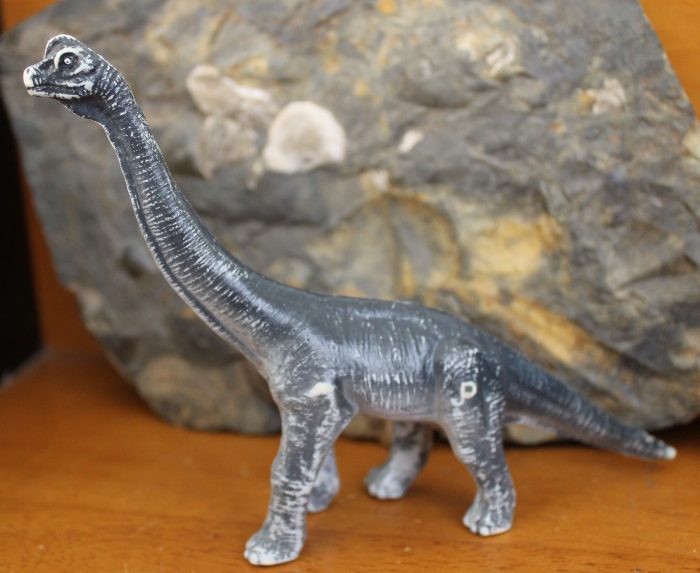
2.7 (7 votes)
It’s a shame that despite four movies spanning the last 25 years we’ve never gotten a good sauropod toy in conjunction with the “Jurassic Park” franchise. No doubt this is because it would have to be an enormous toy, especially if it were in scale with the various Kenner Tyrannosaurus toys released over the years.
Review: Gallimimus (Jurassic Park by Dakin)
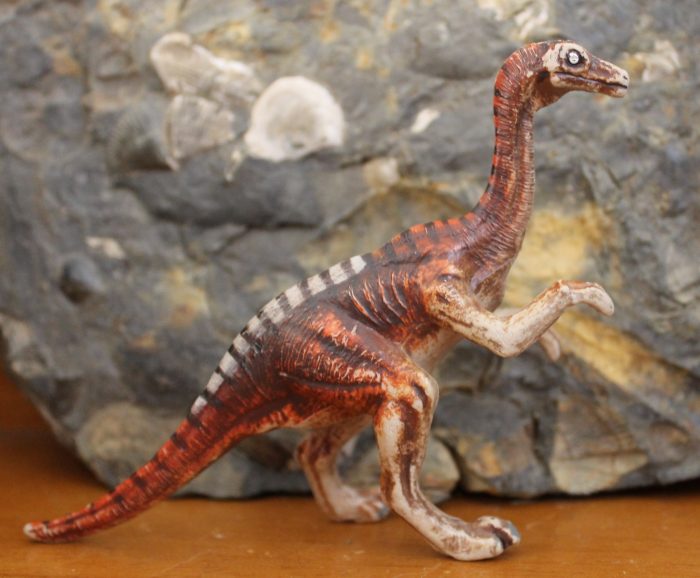
3 (4 votes)
We’re finally past the halfway point in our effort to review all the little “Jurassic Park” dinosaurs put out by Dakin back in 1992, with today’s review concerning one of their better efforts; the Gallimimus. The Dakin line of “Jurassic Park” dinosaurs consist of 6 dinosaurs in total, representing the dinosaurs of the original film.

